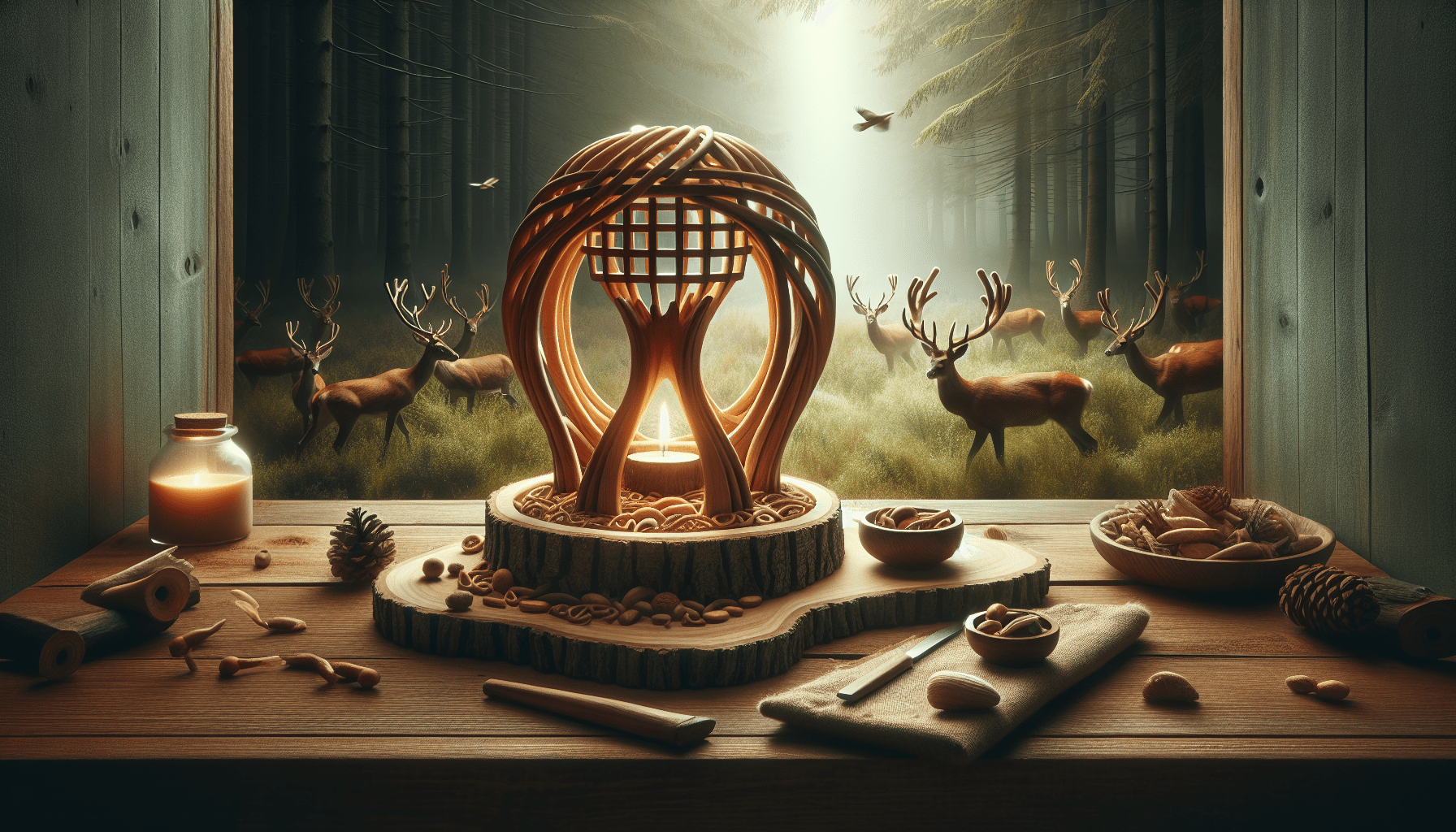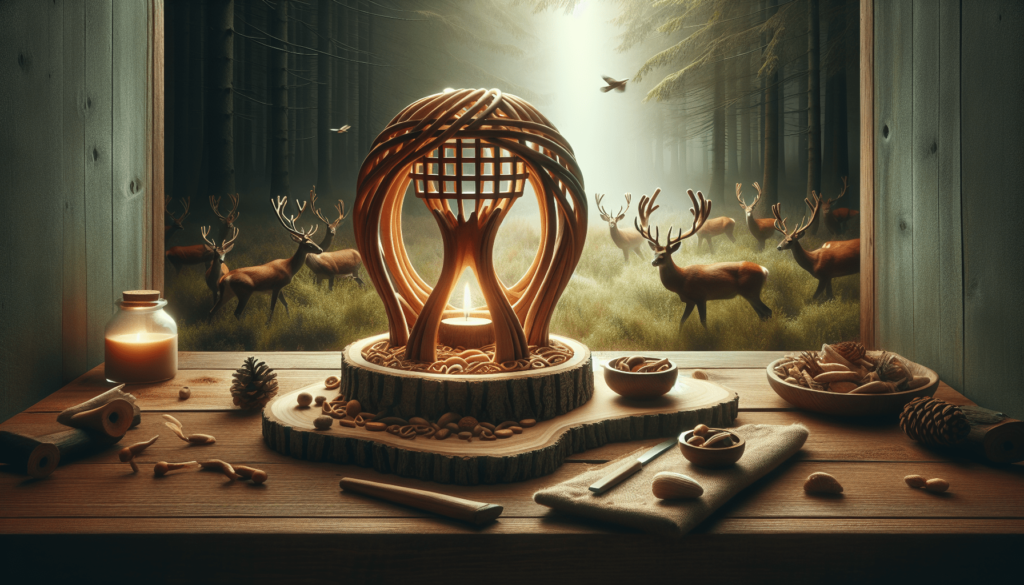
Are you a wildlife enthusiast looking to attract deer to your backyard or hunting ground? Look no further, because we’ve got you covered! In this step-by-step guide, we will walk you through the process of building your very first deer feeder. Whether you’re a beginner or a seasoned DIY-er, we’ve simplified the instructions so that anyone can easily follow along. So grab your tools and let’s get started on creating a haven for these elegant creatures to enjoy all year round. Get ready to witness the beauty of nature up close and personal with our comprehensive guide.
Understanding Legalities
Before you start building your deer feeder, it’s important to check with your local wildlife agencies to ensure that you are complying with all the necessary regulations. Different regions may have specific rules regarding the placement and use of deer feeders, so it’s always best to consult the experts.
Once you have familiarized yourself with the local regulations, it’s important to understand the hunting regulations in your area as well. Some areas may have specific rules regarding hunting near feeders, so it’s crucial to be aware of these guidelines to avoid any legal issues. By educating yourself about the legalities surrounding deer feeders, you can ensure that you are being a responsible and law-abiding hunter.
Optimal Locations for Your Deer Feeder
Choosing the right location for your deer feeder is key to attracting and keeping the deer in your area. To determine the optimal location, you should analyze the natural deer routes in your hunting area. Look for any trails or paths that the deer frequently use and consider placing your feeder along these routes. This will increase the chances of the deer discovering and visiting your feeder.
Additionally, assessing food source locations is crucial in selecting the best spot for your feeder. Look for areas where there is a good supply of natural food sources such as acorns, clover, or browse. Placing your feeder in close proximity to these food sources will not only attract deer but also supplement their natural diet.
Finally, you should consider the safety and security of your feeder. Choose a location that is away from busy roads or areas with high human activity to minimize any potential disturbances. Additionally, make sure that the feeder is placed in an area where it can be easily monitored to prevent vandalism or theft.
Choosing the Right Materials
Selecting the right materials for your deer feeder is essential in ensuring its longevity and durability. When it comes to the barrel or bucket, choose one that is sturdy and capable of withstanding harsh weather conditions. Look for materials such as heavy-duty plastic or metal that can endure the test of time.
Another important aspect is choosing the most appropriate feeder mechanism. There are various options available, such as gravity feeders, spin feeders, or trough feeders. Consider factors like ease of use, maintenance requirements, and deer behavior when selecting the feeder mechanism that best suits your needs.
Durability is a key factor to consider when choosing materials for your deer feeder. Ensure that the materials you select can withstand regular exposure to the elements, such as rain, snow, and extreme temperatures. By investing in high-quality and durable materials, you can enjoy your deer feeder for many seasons to come.

Design of the Deer Feeder
Designing your deer feeder should take into account the natural behavior of deer. Deer are skittish animals that prefer feeding in secluded areas, so creating a feeder that provides a sense of security and privacy is crucial. Consider adding walls or screens around the feeder to create a secluded feeding space.
Additionally, weather conditions should also be considered when designing your feeder. Incorporate a roof or cover to protect the feed from getting wet during rain or snow. This will help keep the feed fresh and prevent it from spoiling.
Safety measures should also be implemented to protect both the feeder and the deer. Install features such as metal bars or mesh to prevent larger animals from gaining access to the feeder and stealing the feed. Additionally, make sure that the feeder is stable and securely anchored to prevent it from tipping over.
Preparing the Materials
Before starting the construction of your deer feeder, it’s important to thoroughly clean the bucket or barrel that you will be using. Remove any dirt, debris, or lingering odors from these containers to avoid attracting unwanted pests or predators. A clean container will ensure that the feed remains fresh and uncontaminated.
Gather all the necessary tools and equipment needed for the construction process. This may include drills, saws, measuring tape, screws, and other hardware. Having everything prepared in advance will streamline the building process and prevent unnecessary delays.
It’s also crucial to keep your materials in optimal condition. Store them in a dry and secure location to prevent any damage or deterioration. Regularly check the materials for any signs of wear or damage and replace them as needed. By taking good care of your materials, you ensure the longevity and effectiveness of your deer feeder.
Building the Container Part of the Feeder
The container part of the deer feeder is where the feed will be stored and dispensed. Start by making appropriate cutouts on the bucket or barrel to allow the feed to flow smoothly. These cutouts can be made using a drill or a saw, depending on the material of your container.
Once the cutouts are made, install the feeder mechanism according to the manufacturer’s instructions. Ensure that it is securely fastened and properly aligned to prevent any feed from spilling out or getting stuck.
To ensure proper sealing and fastening of the container, use waterproof caulk or silicone sealant to seal any gaps or openings. This will prevent moisture from entering the container and keep the feed fresh and dry.
Setting Up the Feeder Foundation or Stand
Building a sturdy foundation for your deer feeder is essential for its stability and longevity. Choose a level and solid surface to place your feeder, such as a concrete pad or solid ground. This will prevent the feeder from sinking into the ground or toppling over during harsh weather conditions.
Consider the height of the feeder stand to provide protection against predators. Elevating the feeder to a certain height can deter larger animals from accessing the feed, ensuring that it is reserved for the deer. However, make sure that the feeder is still easily accessible for deer to reach.
Weatherproofing the stand is another important step to protect it from the elements. Apply a waterproof coating or paint to the stand to prevent rusting or deterioration caused by rain, snow, or UV rays. This will extend the lifespan of the feeder stand and ensure its structural integrity.
Mounting the Container on the Stand
Attaching the container securely to the feeder stand is crucial to prevent accidents and ensure the feeder’s stability. Use strong and durable screws or bolts to fasten the container to the stand. This will ensure that it stays in place even during intense weather conditions or wildlife interactions.
Balancing the feeder is important to ensure an even distribution of feed. Make sure that the container is securely attached to the stand at a balanced position to avoid any tipping or uneven dispensing. This will prevent feed wastage and maximize the effectiveness of your feeder.
Optimal height for deer access should be considered when mounting the container on the stand. The container should be positioned at a height that allows deer to comfortably access the feed. Avoid placing it too high or too low, as this may discourage deer from using the feeder.
Filling the Feeder
Choosing the right kind of feed is crucial for attracting deer to your feeder. Make sure to select a feed that is nutritionally balanced and appropriate for deer. Avoid using feed that contains medications or additives that may be harmful to wildlife. Consulting with local experts or wildlife agencies can help you make an informed decision about the best feed for your area.
When filling the feeder, follow the manufacturer’s guidelines and recommended fill levels. Overfilling the feeder can lead to feed wastage and attract unwanted pests. Regularly check the feed levels and refill as needed to ensure a consistent and reliable food source for the deer.
Regular check-ups and refilling are essential to maintain your feeder’s effectiveness. Inspect the feeder for any signs of damage or wear and make necessary repairs or replacements. Clean the feeder regularly to remove any accumulated debris or mold that may contaminate the feed. By maintaining your feeder, you ensure the health and well-being of the deer visitors.
Concluding Remarks
Building and maintaining a deer feeder is not just about attracting deer for hunting purposes, but also about establishing a harmonious relationship with wildlife. It’s important to practice patience and respect for the natural behavior of deer, allowing them to adapt to the feeder at their own pace.
Respecting wildlife means understanding and abiding by the legalities and regulations surrounding deer feeders. By being knowledgeable about local hunting regulations and consulting with wildlife agencies, you can ensure that you are contributing to the conservation and sustainability of deer populations.
Lastly, enjoy the process of building and maintaining your deer feeder. It’s an opportunity to connect with nature, observe wildlife, and contribute to the overall health and well-being of deer. Embrace the experience and appreciate the beauty of nature that unfolds before your eyes.



